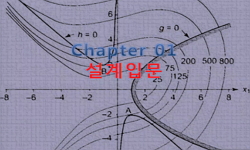The aim of this study is to analyze the inventories of phonemic consonants in the three periods of English under the model of dispersion theory (Flemming, 1995) formalized in terms of Optimality Theory (Prince & Smolensky, 1993) and to show how a cons...
http://chineseinput.net/에서 pinyin(병음)방식으로 중국어를 변환할 수 있습니다.
변환된 중국어를 복사하여 사용하시면 됩니다.
- 中文 을 입력하시려면 zhongwen을 입력하시고 space를누르시면됩니다.
- 北京 을 입력하시려면 beijing을 입력하시고 space를 누르시면 됩니다.
https://www.riss.kr/link?id=A19599841
-
저자
Moon, An-Nah (Inha University)
- 발행기관
- 학술지명
- 권호사항
-
발행연도
2002
-
작성언어
English
- 주제어
-
KDC
701
-
등재정보
KCI등재
-
자료형태
학술저널
- 발행기관 URL
-
수록면
801-825(25쪽)
- 제공처
- 소장기관
-
0
상세조회 -
0
다운로드
부가정보
다국어 초록 (Multilingual Abstract)
The aim of this study is to analyze the inventories of phonemic consonants in the three periods of English under the model of dispersion theory (Flemming, 1995) formalized in terms of Optimality Theory (Prince & Smolensky, 1993) and to show how a constraint-based approach can account for inventory structure and its historical change in a more comprehensive and coherent way. In this study, I focus on the inventory of English fricatives and nasals because historical change has occurred only to them. I attempt to explore why the inventories of the three periods were as they were and to find a pattern which dominates historical change. As predicted by Flemming's dispersion theory, the inventory structure of English is also described mainly in terms of three kinds of constraints, "Maintain contrasts," "Mindist" and "LAZY." It is shown in this study that a balance among them, which is different depending on the periods of history, shapes the inventory structure of each period. In this analysis, it is also clearly noted that English consonants had moved toward the inventory structure which prefers multiple contrasts over a large auditory distance and/or effort minimization.
동일학술지(권/호) 다른 논문
-
- 서울대학교 어학연구소
- 김현
- 2002
- KCI등재
-
Head Movement and the PF Interface
- 서울대학교 어학연구소
- Park, Myung-Kwan
- 2002
- KCI등재
-
- 서울대학교 어학연구소
- 한정한
- 2002
- KCI등재
-
국어 서사문 담화에서의 중심 전이 과정과 응집성에 관한 고찰
- 서울대학교 어학연구소
- 박철우
- 2002
- KCI등재





 RISS
RISS




